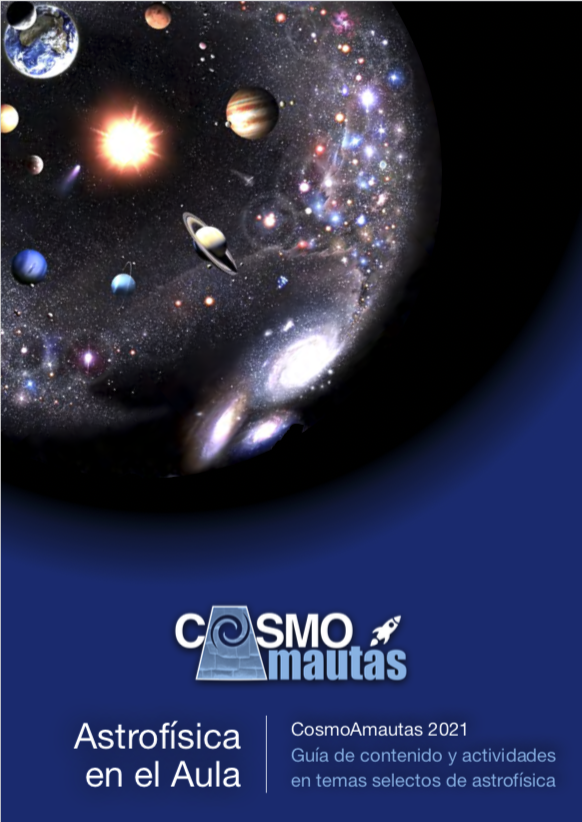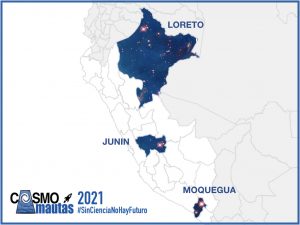The CosmoAmautas project funded by the IAU OAD has published an astrophysics book (Spanish) for high school teachers.
“CosmoAmautas: Astrophysics in the classroom” is a text and activity book with astrophysics teaching material for high school teachers. The content is written in Spanish and intended as introductory material for teachers who want to integrate astronomy into their science and math classes.
The book includes an introduction to topics such as planetary science, stellar evolution, exoplanets, galaxies, black holes, and cosmology. In addition to the astronomy content, the book includes didactic notes on general physics of gravity and light, unit conversion, history of science, and tools for the digital classroom (ICT tools), which are compatible with the requirements of the Peruvian high school curriculum. This book is based on the astrophysics curriculum and education model introduced in the online teacher-training workshop CosmoAmautas, which took place in May and June 2021. CosmoAmautas (amauta = teacher in the Quechua language) is an astronomy education project in Peru, funded by the IAU Office of Astronomy for Development.
CosmoAmautas Project
The CosmoAmautas project seeks to strengthen the scientific education of Peruvian boys and girls, particularly in rural and provincial areas. Funded by the IAU OAD, its goal is to bring the scientific method and STEM subjects closer to students, in a sustainable and scalable way, through their teachers.
During the 2021 workshop, astrophysicists and university physics students shared pedagogical activities related to various astronomy topics with teachers. The activities focused on strengthening a modern and interactive science education, with a special focus on encouraging greater participation of girls and women in STEM careers.
Six sessions of 6-8 hours each, from April 24 to May 29, 2021 with the participation of 50 teachers from 97 applicants in the regions of Junín, Moquegua and Loreto. The participants received activity boxes “CosmoAmautas Boxes” at home, which contained all the necessary materials to participate in the sessions. They included an astrophysics content and activities book (now published on arXiv.org), a terrestrial globe, a gnomon, a compass, various materials for gravity and light experiments such as marbles, lamps, filters. etc. Materials were donated by international (ESO, ESA) and national (CONIDA) organizations.
The workshops focused on inquiry learning activities and content classes on selected astronomy topics. These included classes and activities on the Earth, the Sun and the Moon; the solar system; stars and exoplanets; galaxies and black holes; and cosmology. In addition, various talks and discussions on scientific pedagogy, how and why it is necessary to motivate girls and women in STEM courses, on ancestral astronomy (Inca and pre-Inca), the global climate crisis, as well as its causes and effects in Peru.
Impact of the Project
The workshop received positive feedback from the participating teachers, who affirmed that the workshop met or exceeded their expectations. Teachers reported they not only learned new concepts of astronomy and science education but also developed didactic techniques to improve their virtual classes, which is extremely relevant in the current context.
90% of the participating teachers will implement the activities and methods learned in their classes. Teachers were particularly motivated to implement inquiry learning in their subjects, a method hitherto unknown to most of them. This result implies the contribution to the improvement of science education of more than 3000 students in these rural schools.
In addition, 30% of the participating teachers have opened extra-curricular astronomy clubs in their schools, aimed at the most motivated secondary school students. In these astronomy clubs, teachers and their students carry out experiments, astronomical observations and delve into astrophysics topics, opening for the first time the doors of scientific research and STEM courses to the more than 250 girls, boys and adolescents enrolled.


